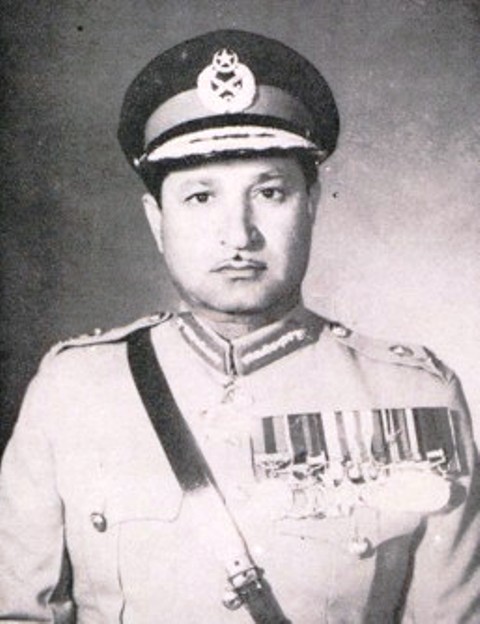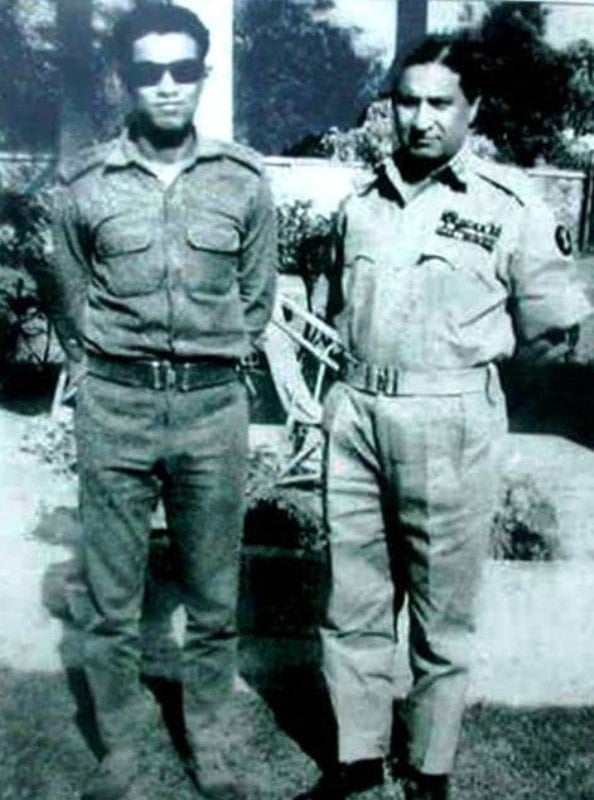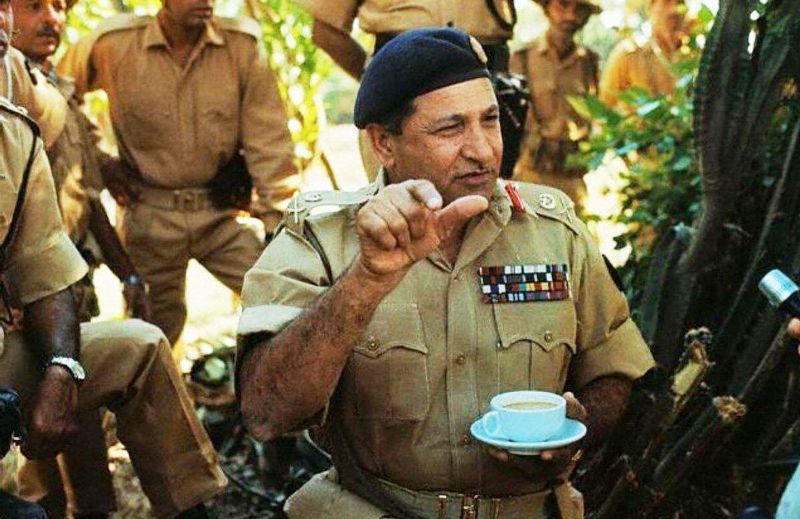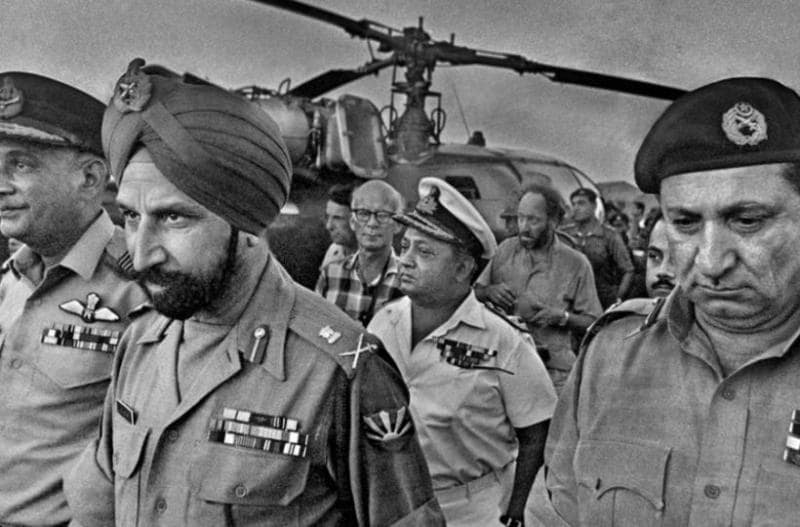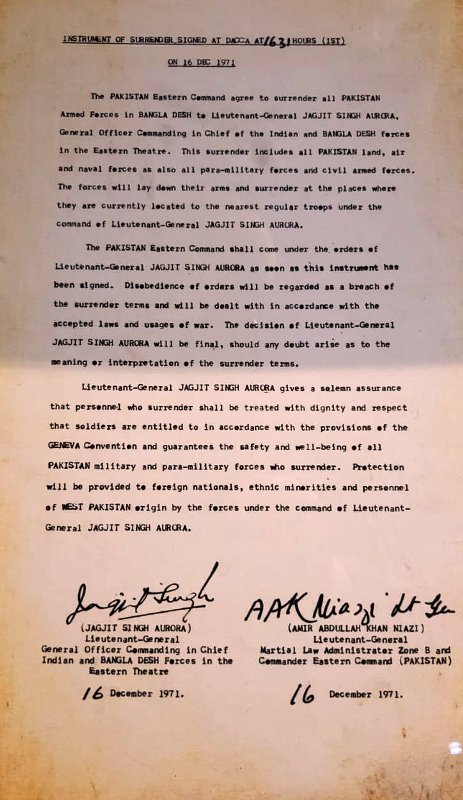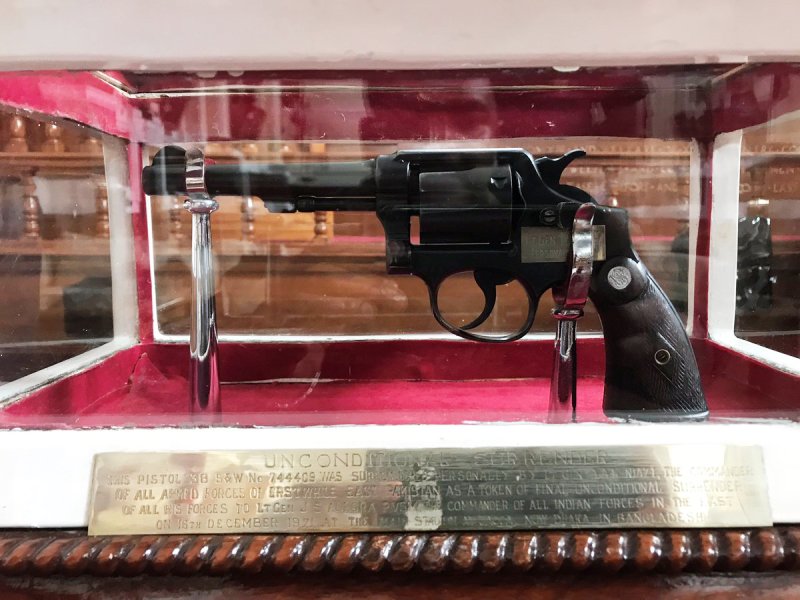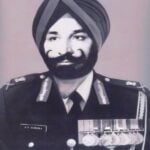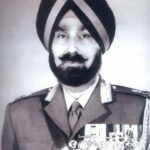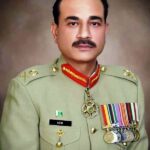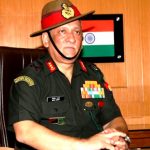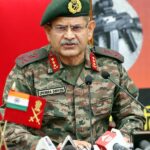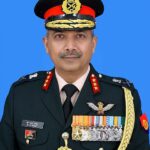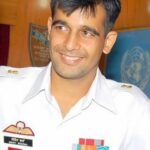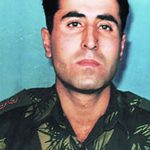AAK Niazi Age, Death, Wife, Children, Family, Biography & More
| Bio/Wiki | |
|---|---|
| Full name | Amir Abdullah Khan Niazi [1]The Betrayal of East Pakistan by AAK Niazi |
| Names earned | Tiger [2]The Citizen |
| Other name | Butcher of Bangladesh [3]The Citizen |
| Profession(s) | Retired Pakistan Army Officer and Politician |
| Famous for | Being the Commander of the Eastern Command of the Pakistan Army during the 1971 Indo-Pakistan War |
| Military Career | |
| Service/Branch | Pakistan Army |
| Rank | Lieutenant General |
| Service Years | 8 March 1942 - June 1975 Note: Before getting commissioned in the British Indian Army as an officer on 8 March 1942, Niazi served as a Sepoy. |
| Unit | • 4th Battalion of the 7th Rajput Regiment (4/7 Rajput Regiment) (1942 - 1947) • 8th Battalion of the Punjab Regiment (1947 - March 1951) • 2nd Battalion of the 1st Punjab Regiment (2/1 Punjab Regiment) (1951) • 1st Battalion of the 14th Punjab Regiment (1/14 Punjab Regiment) (1957 - 1961) |
| Service Number | • ICO- 906 (British Indian Army) • PA-477 (Pakistan Army) |
| Commands | • 51st Infantry Brigade • Commandant of the School of Infantry and Tactics, Quetta Balochistan • 14th Paratroopers Brigade (1965) • 1st Infantry Brigade (1965) • General Officer Commanding (GOC) of the 8th Infantry Division • General Officer Commanding (GOC) of the 10th Infantry Division (1969) • Eastern Command (4 April 1971 - 16 December 1971) |
| Awards, Honours, Achievements | British Decorations • Military Cross (MC) for gallantry by the British government (1944) • War Medal 1939-1945 (with MiD oak leaf) by the British government (1945) • India Service Medal 1939–1945 by the British government (1946) • General Service Medal by the British government (1946) • Burma Star and the Africa Star for participating in the Burmese and African campaigns during the Second World War • 1939-1945 Star for serving in the British Indian Army during the Second World War • Queen Elizabeth II Coronation Medal (1953) Pakistani Decorations • Tamgha-e-Jamhuria by the Pakistan government (1956) • Tamgha-i-Imtiaz by the Government of Pakistan • Sitara-e-Khidmat by the Government of Pakistan • Tamgha-e-Diffa (with clasp) by the Pakistan government (1965) (1971) • Sitara-e-Harb by the Pakistan government (1965) (1971) • Hilal-e-Jurat (Bar) by the Government of Pakistan (1965) (1971) • Sitara-e-Pakistan by the Pakistan government |
| Politics | |
| Political Party | Pakistan National Alliance (PNA)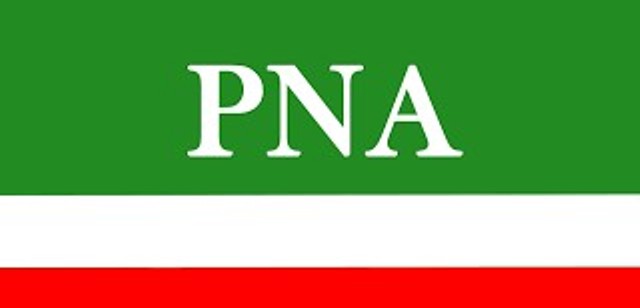 |
| Political Journey | • Joined Pakistan National Alliance (after dismissal from service in 1975) • Left politics in 1977 |
| Personal Life | |
| Date of Birth | Year, 1915 |
| Birthplace | Balo-Khel village, Mianwali district, Punjab Province, British India (now in Punjab, Pakistan) |
| Date of Death | 1 February 2004 |
| Place of Death | Lahore, Punjab Province, Pakistan |
| Age (at the time of death) | 89 Years |
| Death Cause | Diabetic complications [4]Dawn |
| Signature | 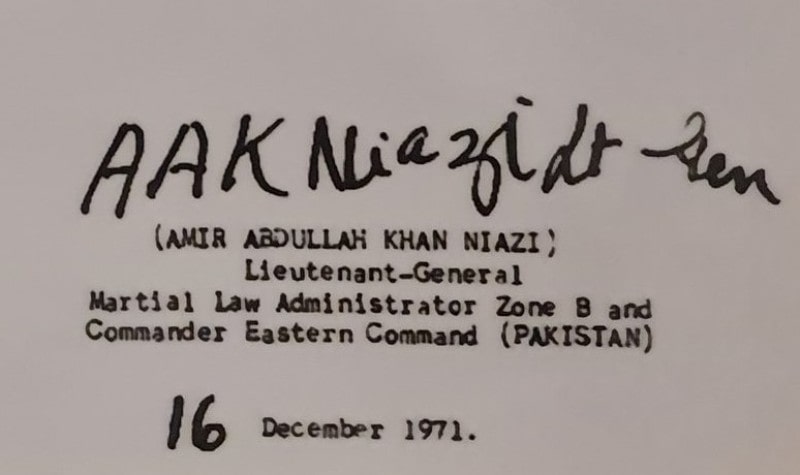 |
| Nationality | • British Indian (1915 - 1947) • Pakistani (1947 - 2004) |
| Hometown | Balo-Khel village, Mianwali district, Punjab Province, Pakistan |
| Educational Qualification | AAK Niazi joined the British Indian Army after completing his matriculation at a local school in Punjab Province [5]NOTHING BUT! by Brigadier Samir Bhattacharya |
| Religion | Islam [6]The Citizen |
| Ethnicity | He belonged to a Niazi Pathan family from Punjab [7]The Citizen |
| Controversies | • Controversial death of a Bengali Pakistan Army officer: After Niazi assumed the command of the Eastern Command, he called for an emergency meeting on 10 April 1971. In the meeting, Niazi reportedly lashed out at the Bengalis who had revolted against the Pakistani regime and said that he would wipe out their entire race. [8]In Quest of Freedom: The War of 1971 - Personal Accounts by Soldiers from India and Bangladesh by Ian Cardozo - Google Books During the meeting, he said, "Main is haramzadi qaum ki naksa badal doon ga. Yeh mujhe kya samajhtey hain?" Major Abu Yusuf Mushtaq Ahmed, a Bengali officer serving in the Pakistan Army, was present at the meeting. After listening to Niazi's statement, he stood up to Niazi and asked him to apologize and take his statement back. This infuriated Niazi, who left the meeting. Later, Major Mushtaq's body was found in his room. According to several sources, he was hurt by Niazi's anti-Bengali sentiments and committed suicide by shooting himself in the bathroom. [9]Geo News' presentation on AAK Niazi Some other sources claim that Mushtaq was murdered by his fellow officers, who slit his throat. Mushtaq's family claimed that the Pakistan Army did not hand over his body to his family for last rites, and they conducted his funeral in a haste. [10]In Quest of Freedom: The War of 1971 - Personal Accounts by Soldiers from India and Bangladesh by Ian Cardozo - Google Books Talking about Mushtaq's death, his family said, "Major Mushtaq never carried a side arm and was under constant surveillance, so to suggest that he shot himself was patently false. Besides, he was a disciplined, mature and stable person and the thought of commiting sucide would never cross his mind." • Exploits of Pakistani troops under his command in 1971: After the defeat of the Pakistan Army in the 1971 war, under the leadership of the Chief Justice of Pakistan Hamoodur Rahman, the Pakistan government constituted a fact-finding committee named Hamoodur Rahman Commission, which was tasked to look into the human rights violations perpetrated by Pakistani troops. Niazi was asked to give his testimonial in front of the committee in 1982. Niazi was accused by the commission of indulging in corrupt practices like using a Pakistani military aeroplane to import betel leaf and paan from West Pakistan to East Pakistan, moral turpitude, and bullying of low-ranking officers for not following his orders. [11]Dawn The commission also presented evidence of Niazi taking sexual favours from "women of bad repute" when he served as the Eastern Army Commander. Later, Aziz Ahmad Khan, who served with Niazi as a Lieutenant Colonel during the 1971 war, testified against Niazi and told the committee that the troops under Niazi's command were involved in the rape and torture of civilians and when Aziz asked them to refrain from indulging in such actions, the Pakistani troops used to tell him that "their Commander (Niazi) was himself a rapist, so how could he stop others from doing so?” Niazi trashed the allegations against him and claimed that there were indeed some occurrences of rape and torture in Bangladesh, but all those who were involved in such actions were caught and severely punished by the army. [12]The Spectral Wound: Sexual Violence, Public Memories, and the Bangladesh War of 1971 by Nayanika Mookherjee - Google Books Niazi further told the committee that upon assuming the command of the Eastern Command, he wrote a letter to the General Headquarters (GHQ) in Rawalpindi on 15 April 1971 regarding the loot and arson being perpetrated by the Pakistani troops in East Pakistan. While talking about it, during an interview, Niazi said, "Immediately after taking command in East Pakistan, I heard numerous reports of troops indulging in loot and arson, killing people at random and without reason in areas cleared of anti-state elements. Realizing the gravity of the situation, I approached my bosses through a letter dated April 15, 1971, informing them of the mess being created. I clearly wrote in my letter that there have been reports of rapes and even the West Pakistanis are not being spared. I informed my seniors that even officers have been suspected of indulging in this shameful activity. However, despite repeated warnings and instructions, the respective commanders failed to curb this alarming state of indiscipline. And this trend definitely undermined our troops’ battle efficiency.” When the committee asked Niazi about Operation Searchlight, which led to the death of more than 3 million Bengalis in East Pakistan, and the defeat of Pakistani forces in the 1971 war, Niazi placed the blame on Yahya Khan and several other high-ranking officials. Talking about it, during an interview, he said, "Besides Yahya Khan, there were a few more personalities equally responsible for the East Pakistan crisis who have not been blamed in the report. The commission did not unravel the whole truth about various personalities and factors, which fuelled the separatist movement in East Pakistan and caused the final break-up of Jinnah’s united Pakistan." After the commission concluded its investigation, it placed the onus of Pakistan's defeat and human rights violation in the 1971 war on Niazi as he was the Army Commander. The committee, however, partially accepted his claims and ordered the Pakistan Army to conduct a court-martial of Lt Gen Niazi. Despite the orders, the Pakistan Army never conducted a court-martial of Niazi. While defending himself, Niazi, during an interview, said, "If I was responsible for such a big tragedy, why was I not court martialed, although General Tikka was out to damage me? Being the army chief, Tikka cancelled two squares of borderland allotted to me in Kasur." Niazi never acknowledged the findings published by the Hamoodur Rahman Commission and called them partial and baseless. [13]Rediff.com [14]A History of the Pakistan Army: Wars and Insurrections by Brian Cloughley - Google Books |
| Relationships & More | |
| Marital Status (at the time of death) | Widower |
| Family | |
| Wife/Spouse | Not Known (deceased) |
| Children | AAK Niazi is survived by five kids |
Some Lesser Known Facts About AAK Niazi
- AAK Niazi was a retired three-star General of the Pakistan Army who commanded the Eastern Command during the 1971 Indo-Pakistan War. The war ended on 16 December 1971, after President Yahya Khan ordered AAK Niazi to surrender to the Indian Army’s Eastern Command, which was led by Lt Gen Jagjit Singh Aurora.
- After completing his formal education, Niazi enrolled in the British Indian Army as a Sepoy. Having served as a Sepoy for some time, Niazi applied for the Emergency Commission as an officer in the British Indian Army.
- After getting selected as the Y Cadet in 1941, Niazi joined the Officers Training School (OTS) in Bangalore. Upon completing his officer’s training at OTS, Niazi was sent to the Regimental Center of the Rajput Regiment at Fatehgarh, where he received additional training.
- Niazi was commissioned as a Second Lieutenant on 8 March 1942 and joined the British Indian Army’s 4th Battalion of the 7th Rajput Regiment (4/7 Rajput Regiment).
- During the Burmese campaign during the Second World War, Niazi’s unit served in the 161st Indian Infantry Brigade in Burma (now Myanmar), which was under the command of Brigadier D. F. W. Warren.
- Niazi’s unit was deployed at the Kekrim Hills in the Assam-Manipur region. His unit was given the responsibility of defending the region against an attack by the Imperial Japanese Army. At Kekrim Hills, Niazi’s unit formed a part of the 14th Army of the British Commonwealth Forces.
- Niazi showed exemplary courage during the battle with the Imperial Japanese Army at the Kekrim Hills as a result of which the Commander of the 14th Army, General Slim, wrote a gallantry citation of Niazi to the General Headquarters in India. In the citation, Slim mentioned Niazi’s leadership capabilities, coolness under fire, ability to change tactics, create diversions, and his capability of evacuating his wounded men from the battlefield.
- In 1944, during the battle of Bauthi-Daung tunnels in Burma, Niazi led his platoon of the 4/7 Rajput Regiment in a successful assault against the Japanese positions. His actions at Bauthi-Daung caught the attention of several high-ranking British Army officers, who recommended Niazi’s name for a Military Cross (MC). Reportedly, the British Army had initially recommended Niazi for a Distinguished Service Order (DSO) medal; however, Niazi, being a low-ranking officer, did not get the DSO medal but received a Military Cross instead.
- On 15 December 1945, AAK Niazi received the Military Cross in a ceremony, where Niazi and Sam Maneskshaw, who later became the Chief of the Indian Army, were the only two Indian officers to receive a gallantry award.
- Since the Emergency Commissioned Officers (ECOs) in the British Indian Army were granted a commission on a short-term basis, Niazi applied for a permanent commission in the British Indian Army after the end of the Second World War. After receiving a permanent commission, Niazi became a Captain and was posted to Quetta, where he attended the Command and Staff College. Yahya Khan, who later became the President of Pakistan, was his instructor there.
- In August 1947, during the partition of India and Pakistan, the British government divided the British Indian Army into the Indian Army and Pakistan Army. Niazi, who had become a Major, decided to join the Pakistan Army and was assigned to the 8th Battalion of the Punjab Regiment.
- After the partition, Niazi served as an instructor at the Command and Staff College in Quetta and established the Tactical Wing there.
- In 1949, Niazi was posted to the Officers Training School (OTS) in Kohat as Colonel Halsay’s GSO-II.
- Niazi became a Lieutenant Colonel in March 1951 and took over as the Commanding Officer (CO) of the 2nd Battalion of the 1st Punjab Regiment (2/1 Punjab Regiment) after the unit’s former Commanding Officer was arrested on the charges of plotting a coup against the Pakistan government. Niazi commanded an infantry battalion in East Pakistan and West Pakistan.
- Niazi was once again posted as an instructor at the Command and Staff College in Quetta after he completed his tenure as the Commanding Officer.
- In 1957, Niazi assumed command of the 1st Battalion of the 14th Punjab Regiment (1/14 Punjab Regiment). He served as the unit’s Commanding Officer till 1961.
- In 1961, Niazi got promoted to the rank of Brigadier.
- In 1964, Niazi published an article in which he talked about infiltration tactics and military-supported local rebellion against the enemy.
- Niazi later assumed command of the 51st Infantry Brigade. As a Brigade Commander, the Pakistan government appointed him as the Martial Law Administrator of Karachi and Lahore.
- Niazi was later posted to the Command and Staff College in Quetta, Balochistan.
- When the war between India and Pakistan broke out in 1965, Niazi assumed command of the 14th Paratroopers Brigade, which conducted operations under the 7th Infantry Division. Later, Niazi’s brigade was relocated to undertake operations under the 12th Infantry Division. As the war progressed, Niazi was appointed Commander of the 1st Infantry Brigade, which was undertaking operations in Pakistan-administered Jammu and Kashmir. He was later sent back to command the 14th Paratroopers Brigade. During the later phase of the war, the 14th Paratroopers Brigade was relocated to Zafarwal, where, the brigade participated in the Battle of Chawinda against the Indian Army and was successful in stopping the advance of the Indian Army.
- Niazi took over the Command of the Command and Staff College in Quetta after the end of the 1965 war.
- After Niazi became a Major General, he was posted to Sialkot, where he assumed command of the 8th Infantry Division as its General Officer Commanding (GOC).
- Niazi became the GOC of the Lahore-based 10th Infantry Division on 22 June 1969.
- Niazi got promoted and became a Lieutenant General on 2 April 1971. After his promotion, Niazi was to assume the command of the IV Corps but was unable to do so as he was sent to East Pakistan to take over the command of the Eastern Army.
- Niazi became the Eastern Army Commander on 4 April 1971. Reportedly, Niazi was the only officer who accepted the proposal of commanding the Eastern Command as many officers were not keen to command due to the sensitive situation in East Pakistan. Even gallantry award-winning Generals like Bahadur Sher Khan refused to accept the command in East Pakistan. The situation in East Pakistan had worsened as General Tikka Khan, who was the Eastern Army Commander before Niazi assumed the command, had initiated Operation Searchlight, aimed at suppressing the rebellion in East Pakistan. The operation led to the death of more than 3 million people. [15]National Herald
- After Niazi arrived in Dhaka, he began devising strategies to effectively deal with the deserters of the East Bengal Rifles (EBR) and the guerilla force Mukti Bahini, which was conducting clandestine operations against the Pakistan Army in East Pakistan.
- Niazi sent several reports back to the Army Headquarters in Rawalpindi in June 1971 in which he claimed that more than 30,000 Mukti Bahinis had been trained and armed by the Indian Army in training camps established across the border. [16]Unconventional Warfare in South Asia: Shadow Warriors and Counterinsurgency by Scott Gates and Kaushik Roy – Google Books He later ordered the Pakistan Army to construct bunkers and other types of defences along the border with India.
- To assist Abdul Motaleb Malik, the last governor of East Pakistan, in maintaining law and order, Niazi was appointed as the Martial Law Administrator by the Pakistan government.
- Later. Niazi ordered two infantry divisions to be deployed at the border with India in an attempt to curb the movement of the Mukti Bahinis across the border.
- Before the beginning of the 1971 Indo-Pakistan war, General Abdul Hamid Khan advised Niazi about the re-deployment of troops in East Pakistan to tackle the threat of an invasion by the Indian Army’s Eastern Command. Niazi could not re-deploy his army due to the shortage of time.
- On 3 December 1971, after Pakistan Air Force bombed the Indian airfields, the war between India and Pakistan broke out. Reportedly, Pakistan’s bombing of the Indian airfields caught Niazi by surprise as he was not informed of the bombings. In his book, The War of the Twins, Major General Farman Ali claimed that Niazi was demoralized and had lost the will to command the army during the later phase of the war. In his book, Farman Ali wrote,
Niazi made the operational blunder of not giving clear orders for the general withdrawal to the selected places when it became clear that the Indians had decided to take the whole of East Bengal. As the Indian troops crossed the border and bludgeoned their way to Dacca, Niazi realised the real nature of the operations, he became nervous and the East Pak Command was completely paralysed. The Pakistani general lost the will to fight.”
- After the Indian Army captured a majority of land in East Pakistan, Niazi tried to recapture the lost land by directing several attacks on the Indian positions. He, however, failed in his attempt as the attacks were repulsed by the Indian troops every time. Reportedly, the Indian Army’s rapid advance towards Dhaka resulted in Niazi’s mental breakdown. [17]Geo News’ presentation on AAK Niazi
- Niazi headed the civilian government in East Pakistan after Governor Abdul Motaleb Malik took refuge in the Red Cross shelter in Dhaka after resigning from his post on 14 December 1971.
- Niazi received a telegram from President Yahya Khan on 14 December 1971. In the telegram, Yahya Khan appreciated Niazi’s resolve to stand against the Indian Army to defend East Pakistan. He also urged Niazi to begin negotiations with the Indian Army to save the lives of the Pakistani troops. In his telegram, Yahya Khan wrote,
You have fought a heroic battle against overwhelming odds. The nation is proud of you … You have now reached a stage where further resistance is no longer humanly possible nor will it serve any useful purpose … You should now take all necessary measures to stop the fighting and preserve the lives of armed forces personnel, all those from West Pakistan and all loyal elements.”
- After receiving the telegram, Niazi extended a surrender to the Indian Army conditionally. According to the conditions, Niazi and the Eastern Command of the Pakistan Army would leave East Pakistan without surrendering themselves. He also said that the Pakistan government would transfer the power to the elected government of Bangladesh. General Sam Manekshaw rejected his terms and called for an unconditional surrender of the Pakistani forces in East Pakistan and gave Niazi a deadline to surrender. On 16 December 1971, Major General JFR Jacob, on behalf of the Indian Eastern Army Commander Jagjit Singh Aurora, told Niazi that if he fails to surrender within 30 minutes, the Indian troops would commence their attack on Dhaka. Niazi agreed to surrender to the Indian Army’s Eastern Command and signed the instrument of surrender on 16 December 1971 at Ramna Race Course in Dhaka at 16.31 IST. With the signing of the surrender documents, more than 93,000 Pakistani soldiers laid down their arms and were taken to India as Prisoners of War (POWs). The surrender at Dhaka became the largest surrender of any country since the end of the Second World War. [18]The Print During the surrender ceremony, Niazi handed over his .38 calibre revolver to the Indian Army’s Eastern Army Commander, Lt Gen Jagjit Singh Aurora.
- After surrendering, Niazi, along with his 93,000 troops, was taken as a Prisoner of War (POW) after which he was taken to a POW camp in Maharashtra. He remained there till 1975 and returned to Pakistan only after every other soldier of the Pakistan Army was repatriated, thus earning him the title of “Soldier’s General.” Niazi was handed over to the Pakistani authorities at the Wagah Border checkpoint. From there, he was taken to the Lahore cantonment, where he was taken into custody by the Pakistani Military Police (MP) and was placed in solitary confinement. Niazi was released after he protested against his arrest.
- Niazi was dismissed from service in June 1975 by Prime Minister Zulfikar Ali Bhutto, who had Niazi’s medals and after-retirement benefits taken away from him. After his dismissal, Niazi said that he was ordered by President Yahya Khan to lay down his arms and surrender to save the lives of the Pakistani troops in East Pakistan. During an interview, Niazi talked about the surrender and said,
I swear on oath that I was given clear-cut orders from Yahya to surrender, but still I was determined to fight till the end. I even sent a message that my decision to fight till the end stands. However, General Abdul Hamid Khan and Air Chief Marshal Rahim rang me up, ordering me to act on the GHQ signal of December 14, 1971 because West Pakistan was in danger. It was at this stage that I was asked to agree on a cease-fire so that the safety of the troops could be ensured.”
- Niazi entered politics after getting dismissed from the Pakistan Army and joined Pakistan National Alliance (PNA), a right-wing political party. As a politician, Niazi supported PNA’s ultra-conservative agenda. Niazi, through his speeches at rallies, would target PM Bhutto and his Pakistan People’s Party.
- During Operation Fair Play in 1977, Niazi was arrested by the police. Operation Fair Play was the codename given to the coup against Zulfiqar Ali Bhutto’s elected government. After his arrest, AAK Niazi left national politics.
- In the 1980s, the Pakistani Ministry of Defence (MoD) reinstated his rank and after-retirement perks by changing his service record to retired from dismissed.
- During an interview, the son of a retired Pakistani officer, Moazzam Khan, said that Niazi was an alcoholic and a womanizer, and it was because of alcoholism that he failed to issue correct orders to his troops in East Pakistan. [19]Moazzam Khan’s interview
- AAK Niazi authored a book titled The Betrayal of East Pakistan, which was published in 1998.
References/Sources:

